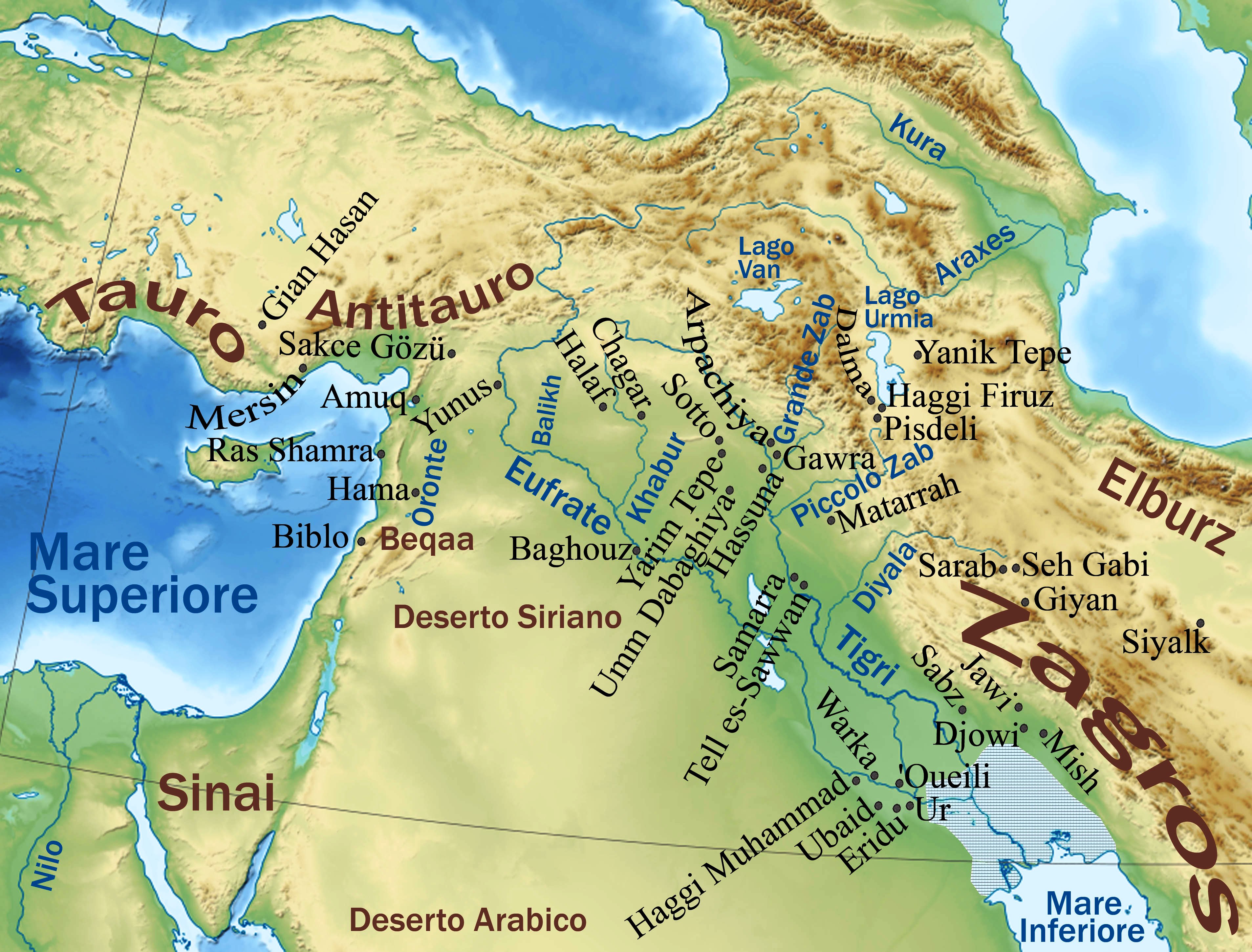ENeolithic - pannous/hieros GitHub Wiki
The spread of urbanization became turbo-boosted by copper and resulted in a bag of inventions and the spread of civilization.
The phase between the Neolithic and the Eneolithic (Chalcolithic: Copper Age) is not always well represented in the archeological record, at least on Wikipedia cultures often span between the Neolithic and the Chalcolithic, making it a bit hard to discern the exact date of arrival of this new groundbreaking technology.
Also there seems to be conflicting evidence: Copper smelting in Belovode Serbia 5000 BC vs Tell Halaf
A copper axe was found at Prokuplje, Serbia, which indicates use of metal in Europe by 5500 BC*, it might have been cold hammered as the Catal Höyük axe though.
The copper age pioneers arrived in Egypt around 3900 BC (Naqada IB - IID), unfolding for 800 years before the rise of the first true dynasty, in close contact and mostly synchronous to the developments in mesopotamia.
For a couple of millennia Before the invention of smelting, cold-hammering permitted the production of a limited range of artifacts like awls, pins, or beads. In larger objects, the metal cracks when it is cold-hammered.
In general the many European finds seem still to be marginalized, maybe due to historic narratives such as these:
Copper metallurgy was likely developed in northern Mesopotamia; the earliest known sites are in Syria such as Tell Halaf, about 6500 years BC. The technology was known considerably longer ago than that--isolated copper axes and adzes are known from Catalhoyuk in Anatolia and Jarmo in Mesopotamia by 7500 cal BC. But the intensive production of copper tools is one of the hallmarks of the Chalcolithic period.
Precise dating of The transition is difficult because the hammering of cold copper ores preceded the invention of smelting, which spread at a very rapid pace around 6000-5000 BC and after.
Given these dates the Hureyra horizon began in the Epi Paleolithic and ended in the early ENeolithic.
The earliest use of lead is documented from the late Neolithic settlement of Yarim Tepe in Iraq,
"The earliest lead (Pb) finds in the ancient Near East are a 6th millennium BC bangle from Yarim Tepe in northern Iraq and a slightly later conical lead piece from Halaf period Arpachiyah, near Mosul.[7] As native lead is extremely rare, such artifacts raise the possibility that lead smelting may have begun even before copper smelting."
Copper smelting is also documented at this site at about the same time period (soon after 6000 BC), although the use of lead seems to precede copper smelting. Early metallurgy is also documented at the nearby site of Tell Maghzaliyah, which seems to be dated even earlier, and completely lacks pottery.
The Timna Valley contains evidence of copper mining in 7000–5000 BC.
marked downward trend in material and aesthetic quality of lithic artefacts. evidence of the loss of craft specialisation caused by increased use of copper tools. Networks of exchange and specialized processing and production that had evolved during the Neolithic seem to have collapsed by the Middle Chalcolithic (c. 4500–3500 BC) and been replaced by the use of local materials by a primarily household-based production of stone tools.
The early European copper cultures like Vinca are connected to Mehrgarh via Caucasian, Anatolian, Syrian, Irak and Iranian settlements (c. 5500–3000 BC) like:
Anatolia: Hacilar, Mersin@Çukurova, Beycesultan, Gian Hasan = Canhasan, Mersin Yumuktepe, Elazig Tepecik, Malatya Degirmentepe, Norsuntepe, and Istanbul Fikirtepe.
Iran: Susa (now a city still existing since 7000 BC •Perseusa •Pegasus?), Chogha Mish, Chogha Bonut, Sialk, Kul Tepe Jolfa The Kura–Araxes culture started ⋍3400BC.
Syria:
- Tell Zeidan 5500 to 4000 BC
- Tell Brak
- Tepe Gawra
Levante: Ghassul, late (4400 BC)
Mesopotamia:
Maybe the introduction of proper smelting corresponds to the
https://en.wikipedia.org/wiki/Halaf-Ubaid_Transitional_period
Irak: Ubaid period (c. 6500–3800 BC) Eneolithic from when?
Tools such as sickles were often made of hard fired clay in the south. But in the north*, stone and sometimes metal were used.
intensive irrigated hydraulic agriculture, and the use of the plough, both introduced from the north, possibly through the earlier Choga Mami, Hadji Muhammed and Samarra cultures.
During the Ubaid 2 and 3 periods (5500–5000 BC) spreading past Bahrain to Dosariyah (obsidian from Armenia) and the copper deposits at Oman.
In North Mesopotamia the period runs only between about 5300 and 4300 BC, replaced by Uruk
South
Irak: Eridu, (5400–4700 BC)
abrupt end in eastern Arabia and the Oman peninsula at 3800 BC (5.9 kiloyear event ?)
tripartite social division between intensive subsistence peasant farmers, with crops and animals coming from the north, tent-dwelling nomadic pastoralists dependent upon their herds, and hunter-fisher folk of the Arabian littoral, living in reed huts.
Too many inventions to count?
3000 - 2200 BCE shadoof
Some other Chalcolithic Sites: Be'er Sheva, Israel; Chirand (India); Los Millares, Spain; Tel Tsaf (Israel), Krasni Yar (Kazakhstan), Teleilat Ghassul (Jordan), Areni-1 (Armenia)
Mehrgarh and neighboring regions, or just missing artifacts:
Ceramic similarities between the Indus Civilization, southern Turkmenistan, and northern Iran during 4300–3300 BC of the Chalcolithic period suggest considerable mobility and trade.
While there is a strong continuity between the neolithic and chalcolithic (Copper Age) cultures of Mehrgarh, dental evidence shows that the chalcolithic population did not descend from the neolithic* population of Mehrgarh.
https://en.wikipedia.org/wiki/List_of_inventions_and_discoveries_of_the_Indus_Valley_Civilisation
https://en.wikipedia.org/wiki/List_of_Egyptian_inventions_and_discoveries

